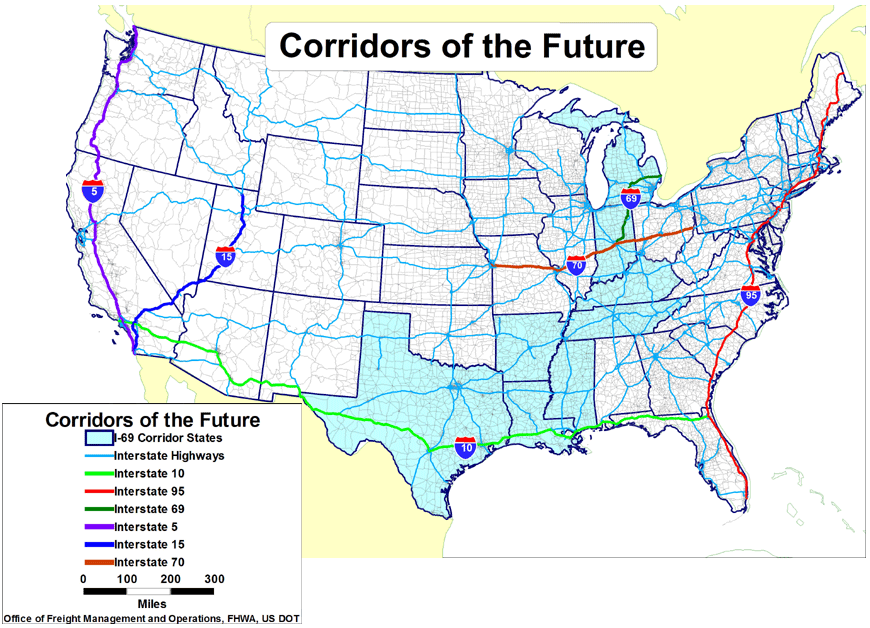Link to the US DOT web site here. So for all the establishment, globalist media calling NAFTA Superhighways “conspiracy theory,” feast your eyes on the government’s own documents that show it’s real and in plain view. Those promoting privatization of our existing tax-funded highways and building massive new trade corridors to benefit multi-national global corporations have come up with new names for the NAFTA superhighways: “corridors of the future” and “high priority corridors.” No matter, if it walks like a duck and talks like a duck, it must be a duck!
FOR IMMEDIATE RELEASE
Monday, September 10, 2007
Contact: Ian Grossman
(202) 366-0660
DOT 95-07
U.S. Department of Transportation Names Six Interstate Routes as “Corridors of the Future” to Help Fight Traffic Congestion
I-95, I-70, I-15, I-5, I-10, and I-69 selected
The U.S. Department of Transportation today announced six interstate routes that will be the first to participate in a new federal initiative to develop multi-state corridors to help reduce congestion.
“We are using a comprehensive approach to fighting congestion along these major interstate routes. What we are doing represents a real break from past approaches that have failed to address growing congestion along our busiest corridors,” said Deputy U.S. Secretary of Transportation Thomas J. Barrett.
Today’s announcement follows a year-long competition to select a handful of interstate corridors from among the 38 applications received from public and private sector entities to join the Department’s “Corridors of the Future” program aimed at developing innovative national and regional approaches to reduce congestion and improve the efficiency of freight delivery. The selected corridors carry 22.7 percent of the nation’s daily interstate travel.
The routes will receive the following funding amounts to implement their development plans: $21.8 million for I-95 from Florida to the Canadian border; $5 million for I-70 in Missouri, Illinois, Indiana, and Ohio; $15 million for I-15 in Arizona, Utah, Nevada, and California; $15 million for I-5 in California, Oregon, and Washington; $8.6 million for I-10 from California to Florida; and $800,000 for I-69 from Texas to Michigan.
The proposals were selected for their potential to use public and private resources to reduce traffic congestion within the corridors and across the country. The concepts include building new roads and adding lanes to existing roads, building truck-only lanes and bypasses, and integrating real-time traffic technology like lane management that can match available capacity on roads to changing traffic demands.
The Department and the states will now work to finalize formal agreements by spring 2008 that will detail the commitments of the federal, state, and local governments involved. These agreements will outline the anticipated role of the private sector as well as how the partners will handle the financing, planning, design, construction, and maintenance of the corridor.
# # #
Fact Sheets:
- Interstate 95 (I-95)
- Interstate 70 (I-70): Dedicated Truck Lanes – Missouri to Ohio
- Interstate 15 (I-15) – California to Utah
- Interstate 5 (I-5) – Washington to California
- Interstate 10 (I-10) Freight Corridor – California to Florida
- Interstate 69 (I-69) Texas to Michigan


